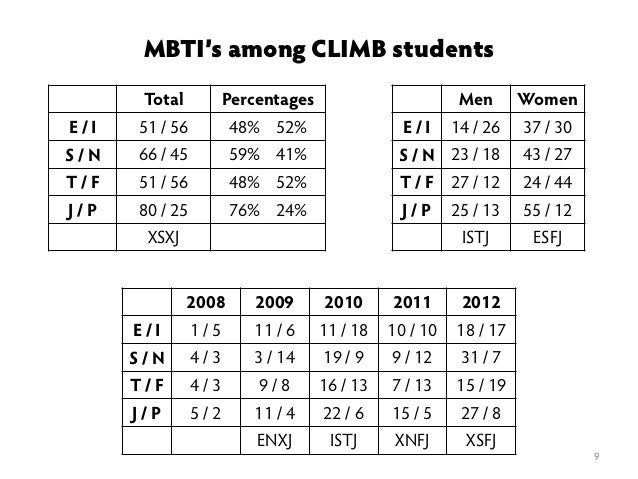

Other studies have shown that over a five-week period, about 50 percent of people will receive different four-letter types. “More than one-third of people receive different four-letter types after a four-week period. “The MTBI is not a reliable sorter of people into ‘types,’ which means that those types are not scientifically meaningful,” says Benning. Those who are relatively close to the midpoint of certain dimensions get boxed into the binaries, even though they’re not strongly leaning towards a specific trait. However, most people generally fall somewhere in between, so two individuals who score closely to one another may get completely different results. To form the 16 personality types, the MBTI divides 4 categories right down the middle, assuming that all people are either one or the other. That is, most people score in the middle, with few people scoring very high or very low on any trait.” “Personality traits, including the four measured by the MBTI, are normally distributed. “For most people, the MBTI personality test is neither accurate nor reliable,” says Derringer.

Many criticize the theory behind it and the rigid dichotomy that tends to oversimplify the human personality. But we’re more complicated than that, and there are certainly more than 16 types of people in the world.” Unreliable Psychological InstrumentĮffectively categorizing the personality spectrum of billions of people into several types can be challenging, so it might not be surprising that the MBTI is considered an unreliable psychological instrument. “The idea of being able to know a person from a single word or acronym is appealing because, if accurate, it would save us a lot of time. “We are fundamentally driven to understand ourselves and others, and often seek that understanding in the form of labels that can stand in for complicated ideas,” says Jaime Lane Derringer, PhD, a psychologist at the University of Illinois, Urbana-Champaign. The psychological phenomenon may also explain the appeal of astrology and fortune-telling.Īside from self-assessment, personality tests also allow individuals to identify with a particular label that encompasses who they are as a person, making them feel understood and fostering a sense of belongingness within that group. This fallacy of personal validation is called the Barnum effect, which describes a person’s tendency to believe that vague personality descriptions are specifically tailored to them.

“The MBTI promises rich narratives to describe a respondent's personality, whereas other descriptions may feel more fragmented.”Įven though personality profiles are generic, people often feel that the descriptions accurately portray the image they have of themselves. “Tests like the MBTI help us to organize our self-perceptions and experiences into coherent wholes,” says Stephen Benning, director of the Psychophysiology of Emotion and Personality Laboratory at the University of Nevada, Las Vegas. Personality tests can be appealing because the questions encourage individuals to evaluate themselves, helping them to assess their own qualities and validate their self-concept. However, the sheer popularity of the psychological instrument isn’t necessarily an indication of its accuracy and utility, and it may be crucial to understand why people are drawn to take such tests and whether the labels have a practical application. The question remains whether these types accurately capture our behavior, intentions and decision-making tendencies.Īt present, an estimated 2 million people take the MBTI test annually, demonstrating how well-known it is by the general population. Each individual is assigned one of the two traits in each category, which produces the 16 different MBTI personality types that we know today –– such as INTJ or ESFP. The test relies on the premise of four categories: introversion or extroversion, sensing or intuition, thinking or feeling, and judging or perceiving. It was developed in the 1940s by the mother-daughter duo Katharine Cook Briggs and Isabel Briggs Myers - neither of whom were psychologists - to classify the various ways people perceive their environment and behave accordingly. The Myers-Briggs Type Indicator, famously known as the Myers-Briggs personality test, or MBTI, is one of the most widely used personality tests in the world.


 0 kommentar(er)
0 kommentar(er)
